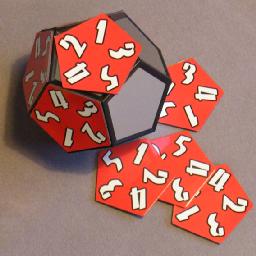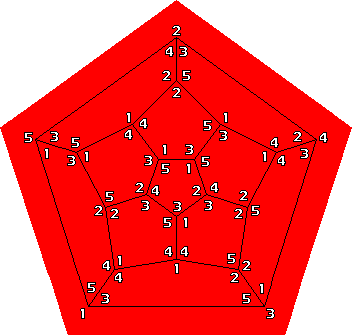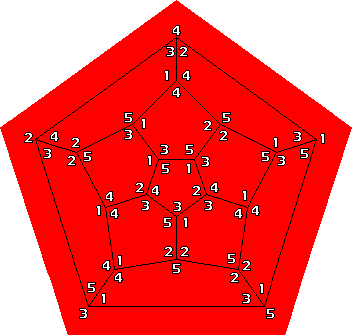


The Dodeca Nona puzzle by Hanayama Toys is a metal dodecahedron with twelve magnetic pentagonal tiles. Every tile has the numbers 1 to 5 arranged in some order at the corners. There are 4!=24 such arrangements, and these all occur on the sides of the 12 tiles. The opposite sides of each tile corner has the same number, so that the arrangements on the two sides of a tile are mirror images. The aim is to place the tiles on the dodecahedron so that every vertex has three numbers that add up to 9.
I don't know of any good way to solve this puzzle other than trial and error, or a brute force computer search. In the Math Games article, it is mentioned that Harry Nelson used a supercomputer to find all solutions, which took 26 minutes. I assume this was in the late 70s. It now takes only seconds on a standard PC to do the same thing.
There are five ways to sum to nine: 1+3+5, 1+4+4, 2+3+4, 2+2+5, or 3+3+3. It is not possible to have distinct numbers at each vertex (i.e. 1+3+5 or 2+3+4) because there are twelve 3's but 20 vertices. It is possible for the vertices two opposite faces to have distinct numbers. There are two solutions to this:

